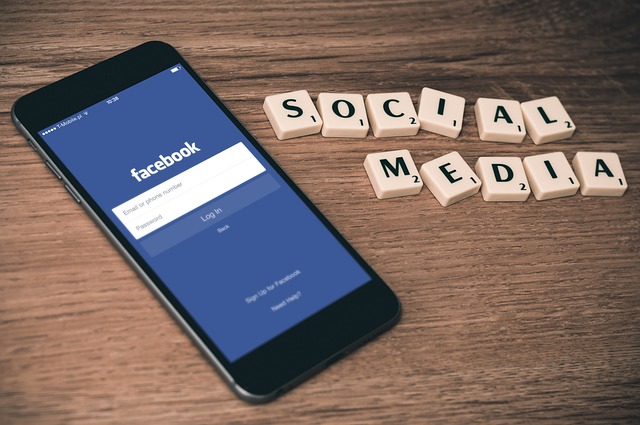Anxiety in the Digital Age: Causes and Coping Strategies
Anxiety disorders have become increasingly prevalent in recent years, with the rise of digital technology and social media playing a significant role in this trend. The constant connectivity and information overload facilitated by smartphones and the internet have created new sources of stress and worry for many individuals. This article explores the complex relationship between our digital lives and anxiety, examining how modern technology impacts mental health and offering practical strategies for managing anxiety in an always-connected world. By understanding the unique challenges posed by our digital environment, we can develop more effective approaches to maintaining emotional well-being and resilience in the face of constant stimulation and potential stressors.

The Neurological Impact of Digital Overload
Research has shown that excessive digital consumption can have a tangible impact on brain function and structure. The constant switching between tasks and apps, a behavior known as “multitasking,” has been linked to decreased attention span and increased difficulty in focusing on single tasks for extended periods. This scattered attention can contribute to feelings of overwhelm and anxiety. Furthermore, the blue light emitted by screens can disrupt sleep patterns, leading to insomnia and exacerbating anxiety symptoms. Understanding these neurological effects is crucial in developing strategies to mitigate the negative impacts of digital overload on mental health.
Social Media and the Anxiety Paradox
While social media platforms were initially designed to connect people and foster community, they have paradoxically contributed to increased feelings of isolation and anxiety for many users. The carefully curated nature of social media profiles often presents an idealized version of people’s lives, leading to unrealistic comparisons and feelings of inadequacy. The constant need for validation through likes, comments, and shares can create a cycle of anxiety and self-doubt. Moreover, the anonymity afforded by online interactions has led to an increase in cyberbullying and online harassment, which can have severe impacts on mental health, particularly for vulnerable populations such as adolescents and young adults.
Digital Detox: Balancing Connectivity and Mental Health
As awareness of the potential negative impacts of excessive digital consumption grows, the concept of “digital detox” has gained popularity. This practice involves intentionally disconnecting from digital devices and online platforms for a set period to reduce stress and anxiety. Digital detoxes can range from short daily breaks to extended periods of disconnection, such as during vacations or retreats. While complete disconnection may not be feasible for many people due to work or personal commitments, incorporating regular digital breaks into daily routines can help reduce anxiety and improve overall well-being. Strategies such as setting specific times for checking emails and social media, using apps to limit screen time, and creating tech-free zones in the home can all contribute to a healthier relationship with digital technology.
Mindfulness and Digital Wellness
Mindfulness practices have emerged as powerful tools for managing anxiety in the digital age. By cultivating present-moment awareness and non-judgmental attention, mindfulness can help individuals develop a more balanced relationship with technology. Mindful use of digital devices involves being intentional about when and how we engage with technology, rather than mindlessly scrolling or reacting to every notification. Incorporating mindfulness techniques such as deep breathing exercises, meditation, or body scans into daily routines can help reduce anxiety and increase resilience to digital stressors. Additionally, mindfulness-based apps and online resources have become increasingly popular, offering guided meditations and tools for managing anxiety in accessible digital formats.
The Role of Digital Literacy in Anxiety Management
Developing digital literacy skills is crucial for navigating the online world in a way that promotes mental health and reduces anxiety. This includes understanding how to evaluate the credibility of online information, recognizing the potential biases in social media algorithms, and being aware of the psychological impacts of different types of digital content. Education on digital wellness should be incorporated into school curricula and workplace training programs to equip individuals with the tools needed to use technology in a healthy and balanced way. By fostering critical thinking skills and awareness of the potential pitfalls of digital consumption, we can empower individuals to make informed choices about their online engagement and reduce technology-related anxiety.
Building Real-World Connections in a Digital World
While digital technology has revolutionized how we communicate and connect with others, it’s essential to maintain and nurture real-world relationships to combat anxiety and isolation. Encouraging face-to-face interactions, participating in community activities, and engaging in shared experiences without the mediation of screens can provide a crucial counterbalance to digital interactions. Creating opportunities for genuine, in-person connections can help reduce feelings of loneliness and anxiety that may be exacerbated by excessive online engagement. This might involve joining local clubs or groups, volunteering, or simply making an effort to spend quality time with friends and family without the distraction of digital devices.
The Future of Anxiety Management in a Tech-Driven Society
As technology continues to evolve and integrate further into our daily lives, the landscape of anxiety management will likely undergo significant changes. Emerging technologies such as virtual reality (VR) and artificial intelligence (AI) have the potential to revolutionize mental health treatment, offering new tools for anxiety management and therapy. VR exposure therapy, for example, can provide controlled environments for individuals to confront and overcome anxiety-inducing situations. AI-powered chatbots and digital assistants are being developed to offer personalized support and interventions for anxiety management. However, as these technologies advance, it will be crucial to consider their ethical implications and potential impacts on privacy and human connection.
In conclusion, managing anxiety in the digital age requires a multifaceted approach that acknowledges both the benefits and challenges of our technology-driven world. By developing awareness of how digital consumption affects our mental health, implementing strategies for digital wellness, and fostering real-world connections, we can navigate the complexities of modern life with greater resilience and emotional well-being. As we continue to adapt to an ever-changing technological landscape, prioritizing mental health and developing healthy relationships with digital tools will be essential for thriving in the 21st century and beyond.




